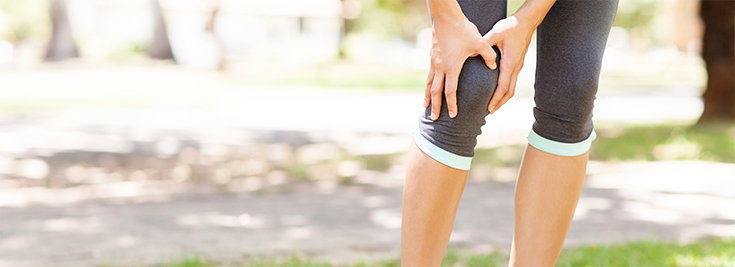
Chronic Problems Aided by Braces and Supports
Mention the word ‘braces’, and many will quickly associate it with orthodontists, teenagers, and payment plans. But for www.ameswalker.com/content/do-i-need-a-knee-brace.aspmany of us who suffer from chronic conditions causing joint pain or pain in other extremities, braces (including supports and splints) can mean the difference between suffering and relief, mobility and movement, and usually the ability to resume normal daily routine and activity.
The list of chronic conditions and ailments in various parts of the body can read like an A to Z alphabet chart. Some of the most commonly occurring are as follows, and they all have a variety of types of braces and supports that are found to be effective in pain relief. Specific braces or supports that are work during the day can offer relief and help alleviate pain during normal activities, as well as avoid possibility of causing more serious or secondary problems in the area. Night splints and compression type supports can also offer safe ways to immobilize and stretch a joint or area to help in relieving pressure and pain during sleep.
Foot and Ankle problems:
- Achilles tendonitis – typically develops from overuse, improper footwear, side effects from certain medications, and accidents.
- Osteoarthritis – also called “wear and tear” arthritis, whereby the cartilage in joints breaks down over time causing various symptoms such as pain, swelling and stiffness.
- Metatarsalgia, – also known as “ball of foot pain” and often thought of as a symptom of other conditions, rather than as a specific disease.
- Plantar fasciitis – sometimes called a heel spur. It is a painful condition affecting the bottom of the foot and major cause of heel pain. and is hard to find the actual cause, but support and braces offer relief during the day, night splints worn at night to control and stretch the area
- Bunions: Bony bumps that forms on the joint at the base of the big toe. Can be caused by wearing improperly fitted shoes, but they can also develop as a result of an inherited structural defect, stress on the foot or a medical condition, such as arthritis.
Hand and Wrist problems:
- Carpal tunnel Syndrome – characterized by numbness, tingling, pain, and weakness. It typically affects the thumb, index, and middle fingers and is often most painful at night.
- Dequervain’s Tenosynovitis – affects the tendons on the thumb side of the wrist and generally hurts most when turning the wrist, trying to grasp anything or make a fist.
- Arthritis – The main symptoms of arthritis are inflammation, joint pain and stiffness, which typically worsen with age. The most common types of arthritis are osteoarthritis and rheumatoid arthritis.
Elbow problems:
- Tennis or Golf Elbow – both are chronic conditions caused by repetitive activities beyond just golf swinging, like throwing, or chopping.
- Arthritis – as mentioned earlier, it is often a progressive condition in which the cartilage that normally lines the joint is compromised and eventually wears completely away as a result of injury, overuse, or through inflammatory diseases such as rheumatoid arthritis.
Knee problems:
- ACL injury -The anterior cruciate ligament I (ACL) is one of four critical ligaments that provide stability to the knee joint, and is the most common knee ligament injury. While injury is often suggested, many people find that supports such as 4 point hinge braces do help and protect the knee during contact sports.
- MCL injury – Medial Collateral Ligament Injury, whose symptoms, causes and treatments are similar to that of the ACL above.
- Chondromalacia patella – often called “Runner’s Knee,” is a common cause of kneecap pain or anterior knee pain.
- Osgood – Schlatter Disease – causes pain and swelling in the shinbone (tibia) just below the kneecap (patella). Often occurs in younger athletes and teenagers, and is generally outgrown.
- Iliotibial band (ITB) syndrome – an overuse problem that is often seen in bicyclists, runners, and long-distance walkers.
- Meniscus Tear – usually caused by twisting or turning quickly while the foot remains in one place, or can occur when lifting a heavy object something heavy or playing sports.
- Osteoarthritis
Back problems:
- Herniated disks – also called ruptured or slipped disks, are most common in the lumbar spine. Back braces can offer support and relief by providing compression and stability to the weakened area.
- Sciatica – Low back pain that usually travels down the large sciatic nerve, from the lower back down the back of the leg. There are braces with lumbar support, abdominal support, and compression to offer relief for this condition.
While it is possible to make a purchase based on product information made available in a catalog or website, it is important to insure you are choosing the best option for your needs, and your money is being well-spent. To help insure you make the proper choice, Ameswalker.com has certified fitters available to assist you in selecting the right brace or support to provide maximum relief for your specific problem.
Kaki Zell - Vice President of Sales, Marketing, eCommerce at Legs-4-Life LLC Kaki holds a Bachelor of Science degree in Business Administration and Management from Virginia Polytechnic Institute and State University. She’s been working in the medical device industry for over 11 years and currently serves on the Board of Directors for the Greensboro Science Center.
